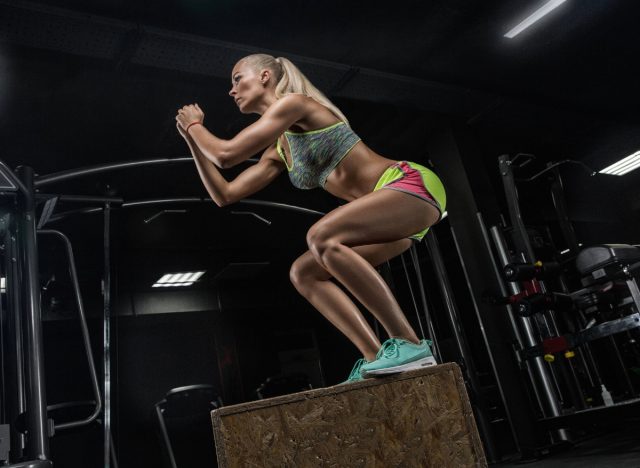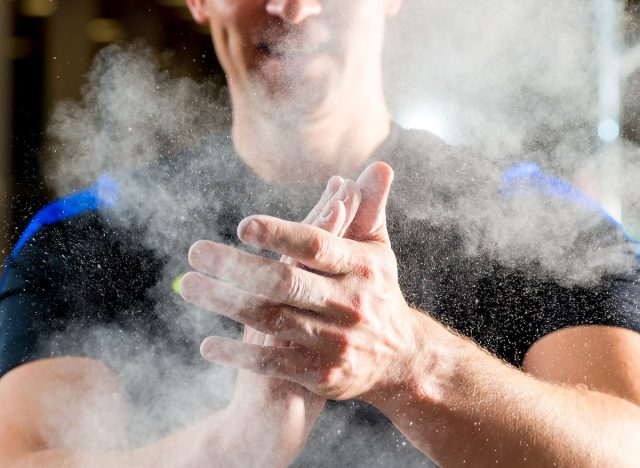If You Can Jump This High, Your Lower Body Power Is Off the Charts

Looking to test your lower-body strength and anaerobic power? The vertical jump is an excellent way to do exactly that. In fact, your vertical jump height can be a key indicator of overall athletic performance. That’s why we connected with a fitness pro to learn the vertical jump height that signifies your lower-body power is off the charts.
Amani Taylor, PT, DPT, of FYZICAL Affton, shares the key factors that impact your vertical jump.
“Jump performance relies on the power generated during the stretch-shortening cycle, when an active muscle stretches (eccentric contraction) and is immediately followed by a muscle shortening (concentric contraction),” she says. “As we age, our muscular power declines as our bodies change due to reasons such as increases in passive mass that do not contribute to our power generation, loss of muscle mass in different muscle groups at different rates, changes in skeletal muscle cross-sectional area, and changes in tendon elasticity. Despite the stretch we can create through the stretch-shortening cycle, if we cannot generate the power necessary to overcome gravity, our jump performance is affected.”
Keep in mind that your height and weight can impact results.
“Generally, a smaller athlete has a higher strength-to-mass ratio than a larger athlete, allowing them to jump higher than a larger individual who has to generate more power to counteract gravity’s downward force,” Amani explains.
Now, let’s get into the vertical jump height that signals top-notch lower-body power.
Vertical Jump Benchmarks To Aim For

According to Amani, the average man’s vertical jump height is upwards of 20 inches and a woman’s is upwards of 16 inches. For lower-body strength and power to be classified as off the charts, a man would aim for ~28 inches and a woman would strive for ~24 inches.
How to Safely Test Your Vertical Jump

Amani breaks down the wall and chalk method.
- Head to an unobstructed wall in your home or at the gym.
- Put some chalk on your dominant hand’s fingertips.
- Stand tall with your dominant shoulder about 6 inches away from the wall.
- With both feet flat on the floor, reach up as high as you’re able to and make a mark on the wall with your chalk hand.
- Return to standing.
- Flex at your knees and hips, pressing your trunk forward and reaching your arms back.
- Jump up, reaching your dominant hand overhead and moving your nondominant hand downward.
- Once you reach your highest point, make a second mark on the wall using your dominant hand.
- Measure the distance between the two chalk marks to determine your score.
- The best out of three trials is recorded to the closest 0.5 inches.